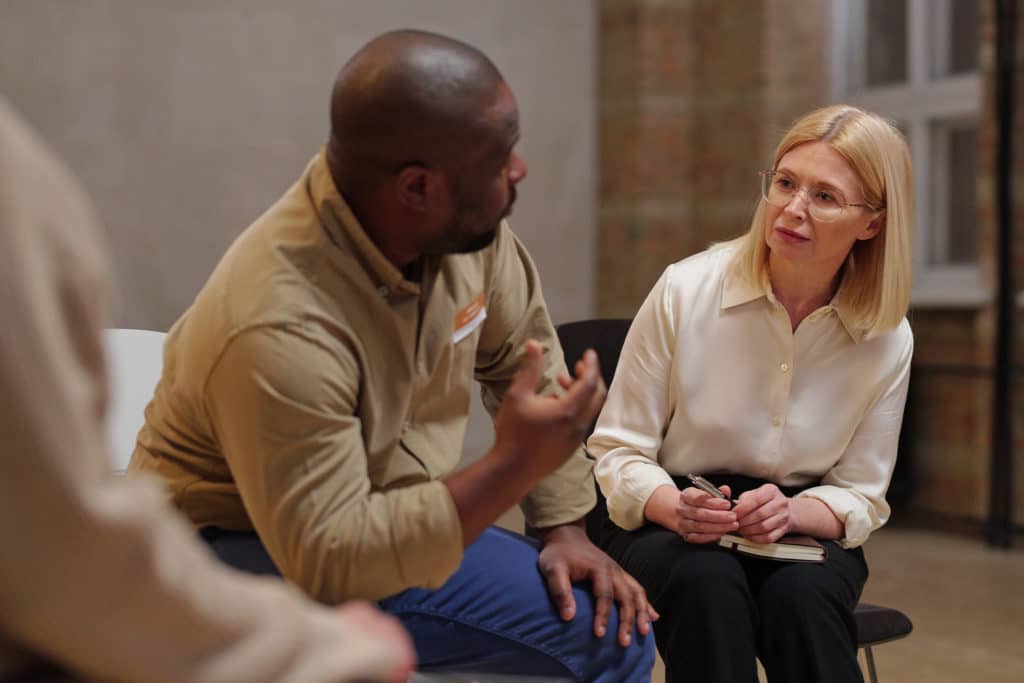
Phobias Diagnosis and Treatment
Learn about causes, symptoms, types, and treatment options for phobias.
Table of Contents
What Are Phobias?
A phobia is an excessive and irrational fear reaction that often centers around a specific object or activity. With a phobia, the brain perceives a typically harmless object as a threat, acting as a catalyst for the body’s natural process of response. This response often incites a bodily reaction that includes physical symptoms resembling the flight or fight instinct. It is estimated that over 9% of adults in the United States suffering from a specific phobia in the past year.1
Depending on the severity, some phobias can be debilitating and interfere with an individual’s overall quality of life. The fear and anxiety that come with a phobia can cause an individual to isolate themselves to avoid the object of their fear.
Causes of Phobias
Despite a sizable percentage of the population facing phobias in their lifetimes, it’s still unclear what causes all types of phobias.2 It’s believed that some phobias occur due to a negative experience with an object or experience. Other research suggests that phobias may emerge as a result of triggering environmental factors or genetics.
A Closer Look at Phobias
Specific Phobias
Specific phobias are also known as simple phobias. These typically develop during childhood and often become less severe with age. Specific phobias are more likely to develop from a bad experience, such as an animal attack or natural disaster.
- Animal phobia (zoophobia)
- Environmental phobia (such as astraphobia–a fear of thunderstorms)
- Situational phobia (such as acrophobia– the phobia of heights)
- Bodily phobia
Complex Phobias
Complex phobias are more deeply rooted than specific phobias and may not be linked to a particular memory or experience. Often, these phobias revolve around concepts or ideas, and they can be far more debilitating than specific phobias. In addition, some complex phobias are considered disorders of their own, such as social anxiety disorder.
Symptoms of Phobias
Phobias are most often defined by their behavioral symptoms. For example, avoidance of the object of fear, sometimes to the point where it interferes with other aspects of life. However, there are also physical symptoms of anxiety that are associated with phobias.
Some of the physical symptoms of phobias may include:
- Pounding or racing heart
- Shortness of breath
- Dry mouth
- Nausea
- Elevated blood pressure
These symptoms are not necessarily symptoms of phobias themselves, but rather the anxiety resulting from having a phobia.
Some Types of Phobias
While phobias can be categorized as either specific or complex, these are only umbrella terms for dozens, if not hundreds, of types of phobias.
Aerophobia
Aerophobia is the fear of flying. There is no one specific cause for this particular phobia; often, it is a combination of factors. While humans are born with the inherent fear of falling, children may also be exposed to situations or environments where the fear of flying is portrayed. These factors can increase the likelihood of developing aerophobia, especially if flying-related trauma is present.
Arachnophobia
Arachnophobia is the fear of arachnids, most specifically spiders. Many people are squeamish around spiders, but those with arachnophobia may suffer from a debilitating fear that prevents them from fulfilling daily life activities in avoidance of spiders.
Claustrophobia
Claustrophobia is one of the more common phobias encountered in daily life. This is the fear of confined or enclosed spaces. While anyone can develop claustrophobia, it is more likely to affect women.3
For those with claustrophobia, exposure to confined places may result in feelings of a panic attack, although phobias are not classified as a panic disorder.
Emetophobia
This type of phobia revolves around vomiting. While nobody enjoys the action of vomiting, people with emetophobia will go out of their way to avoid situations where vomiting is a possibility. For example, avoiding pregnancy due to the fear of morning sickness or similar situations.
Erythrophobia
Erythrophobia, the fear of blushing, can be a much harder phobia to treat than other types. Blushing is a natural bodily response in which blood is more pronounced in areas such as the cheeks or ears. Oftentimes, erythrophobia has its origins in fear of embarrassment.4
Treatment of Phobias

It can be hard to live with a phobia; however, there are treatments available that can help people reclaim their lives and restore their daily quality of living. Some of the treatment options include taking medications to help target the source and symptoms of the phobia and utilizing psychotherapy to help manage symptoms and learn new coping mechanisms.
Medications
Certain medications may be beneficial for treating phobias. While some medications target the source of the phobia, such as reducing vomiting for those with emetophobia, others may target the brain much like medication for anxiety or depression would do.
Some of the medications used to treat phobias are beta-blockers, antidepressants, and tranquilizers.
Behavioral Therapy
There are multiple types of psychotherapy available, but behavioral therapy is the most common for phobia treatment. Following a phobia diagnosis, a healthcare professional may recommend one or more types of behavioral therapy to help target the disorder and its symptoms.
Two of the most common behavioral therapies used as phobia treatment are exposure therapy and cognitive behavioral therapy (CBT).
Desensitization, or Exposure Therapy
Exposure therapy, also known as desensitization, is a form of behavioral therapy that gradually increases the patient’s exposure to their particular object of fear. This helps the brain understand that the fear is irrational and that the object is actually harmless.
While desensitization may not result in a full recovery, it can help in reducing the severity of symptoms. For complex disorders, this can help restore day-to-day life.
Cognitive Behavioral Therapy (CBT)
Cognitive behavioral therapy, or CBT, is another valuable form of therapy. This therapy is often held in a safe environment and focuses more on understanding the connection between the brain or thoughts and actions or behaviors. This can allow the patient to better consider and defuse their reactions to their objects of fear, allowing them to better cope with phobia symptoms.
Manage Your Phobias with J. Flowers Health Institute
No one should have to compromise their quality of life because of a phobia. Here at J. Flowers Health Institute, we are ready to not only address any relevant phobias, but the root of the problem, for the sake of restoring your mental wellbeing. Our qualified staff looks forward to working with you towards your wellness journey.






